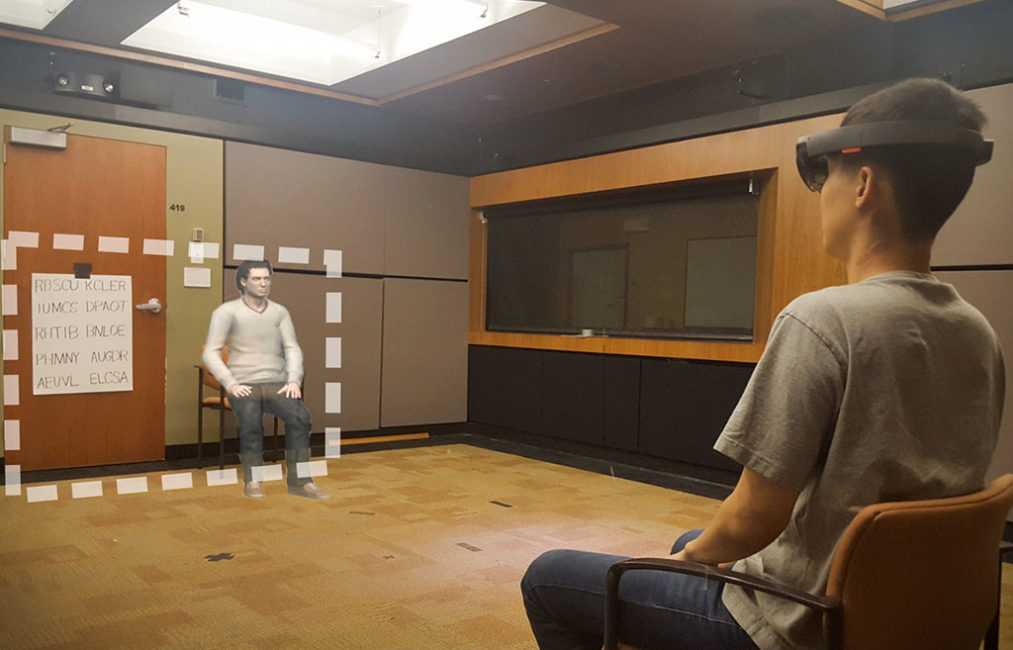mediaX Thought Leader Examines How Augmented Reality Affects Behavior

In a new study led by Jeremy Bailenson, a professor of communication in the School of Humanities and Sciences, researchers found that after people had an experience in augmented reality (AR) – simulated by wearing goggles that layer computer-generated content onto real-world environments – their interactions in their physical world changed as well, even with the AR device removed. For example, people avoided sitting on a chair they had just seen a virtual person sit on. These findings are set to publish May 14 in PLOS ONE.
Bailenson said today’s AR goggles can project a realistic, 3D version of an actual person in real time onto the physical surroundings of the goggles-wearer. This allows for groups of people across the world to make eye contact and communicate nonverbally in other nuanced ways – something that video conferencing struggles to achieve.
“AR could help the climate change crisis by allowing realistic virtual meetings, which would avoid the need for gas to commute or flying to meetings in person,” Bailenson said. “And this research can help bring attention to the possible social consequences of AR use at a large scale, so the technology can be designed to avoid these issues before becoming ubiquitous.”
“This paper scratches the surface of the social-psychological costs and benefits of AR use, but much research is needed to understand the effects of this technology as it scales,” the researchers wrote.
Read The Stanford News Story by Alex Shashkevich HERE
Image credit: Mark Miller and Stanford’s Virtual Human Interaction Lab